When Charles Munro introduced rugby to New Zealand in 1870 did he think the sport would become the national sport of New Zealand?
Who knows! But what we do know is the New Zealand Rugby Museum celebrates the history of the sport in New Zealand.
If the museum wasn’t in Palmerston North, I think it would be a lot more popular with tourists who want to learn about this subculture.
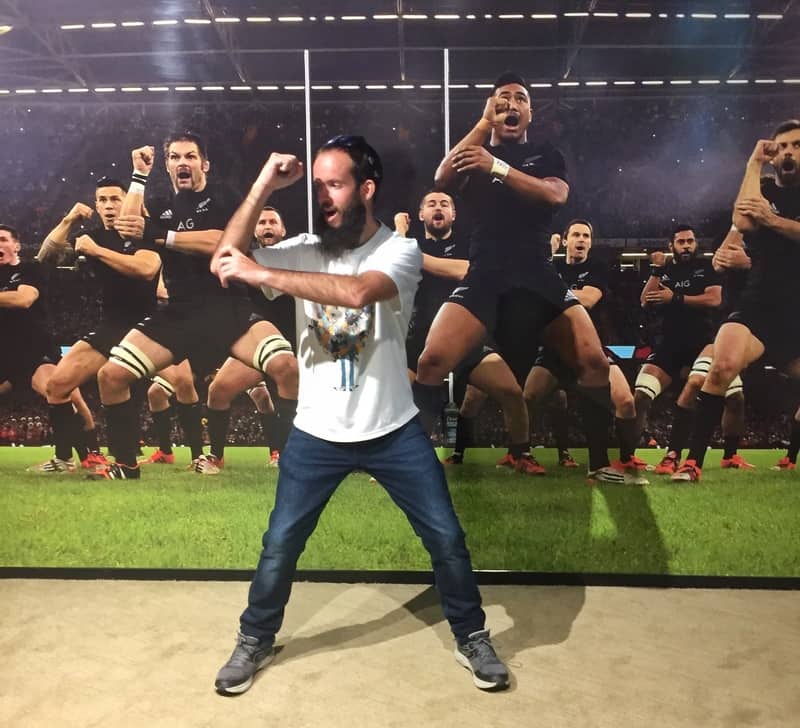
Why wouldn’t you want a photo with a photo opportunity like this?
Within the museum there’s a tonne of memorabilia, trophies, equipment, information cards, and a small interactive area where you can test your rugby skills.
This post will let you know everything you need to know about visiting the New Zealand Rugby Museum, along with a trip report from my visit (late 2018) and a few fun facts I learned.
TABLE OF CONTENTS
1. NZ Rugby Museum Details
2. My Trip Report
3. Five Facts Learned
1. NEW ZEALAND RUGBY MUSEUM DETAILS
I wasn’t really sure what to expect. I figured the museum wouldn’t be bad given the stature of the sport in New Zealand, but with such a low key presence I wasn’t sure how epic the place would be.
Safe to say I was impressed! From curators to volunteers there are lots of passionate people who make this museum worth a visit and one of the top activities in Palmerston North.
Where: 326 Main St, Palmerston North 4410, New Zealand (Google Maps location here).
Opening Hours: 7 days a week from 10am – 4pm (closed on Christmas Day, Boxing Day, New Years Day, and Easter Friday).
*For museum access on Mondays please phone 06 358 6947
Prices:
- Adults $15
- Children $6
- Family $40
Official Website:
New Zealand Rugby Museum
2. NZ RUGBY MUSEUM TRIP REPORT
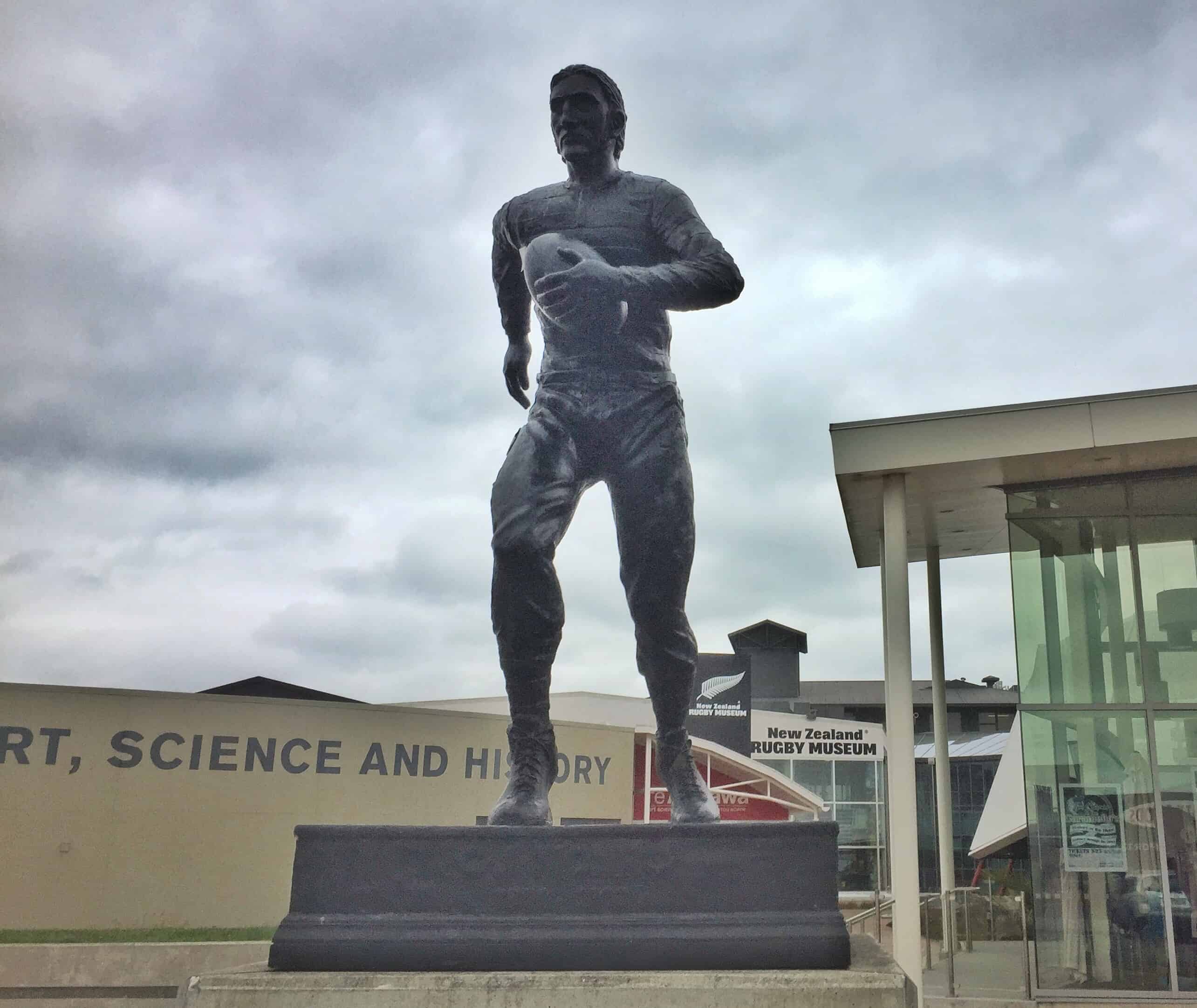
A statue of Charles Munro is in front of the museum.
As I walked down to the museum, it’s obvious when you arrive with the statue of Charles in front of the Te Manawa building where the museum is. I bought my ticket on the ground floor before heading up the stairs to the museum. As I entered I spotted some used rugby books for sale which made me happy (I picked up a couple on the way out).
I was then met by a volunteer who let me know the best way to explore the museum and then left me to it. I liked that. He was clearly knowledgeable about rugby as I overheard a conversation he was having with other visitors as I walked around. Maybe I should have had a chat with him?
The museum is in one large room with display cases on the perimeter, and the interactive area in the centre of the room towards the back. It’s netted off so your wayward kicks aren’t going to cause any damage…

This is what the display cases look like.
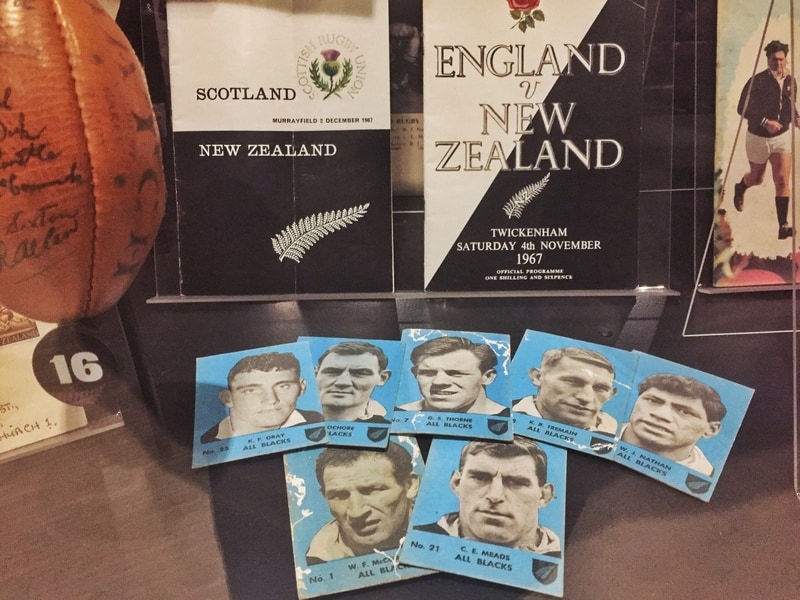
An example of the memorabilia you’ll see.
The display cases are organised in chronological order with each one representing a decade of rugby history going back to when the rugby was introduced into NZ in 1870. Within each case there’s a bunch of memorabilia (there are ~40,000 pieces in their total collection) from New Zealand and abroad along with info boards telling the stories of important events of the decade. The information mainly focuses on New Zealand’s rugby history but brings in stories from other parts of the world from time to time.
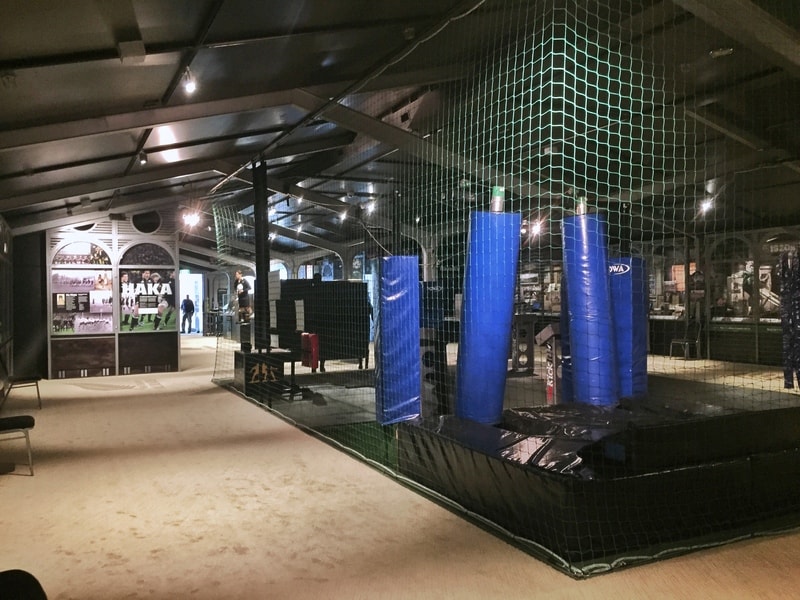
If you’re not a massive rugby fan you might be overwhelmed with the amount of information in each case, so don’t feel like you need to read everything.
There are also some other displays that break up all the information, but you’ll spend most of your time reading the stories.
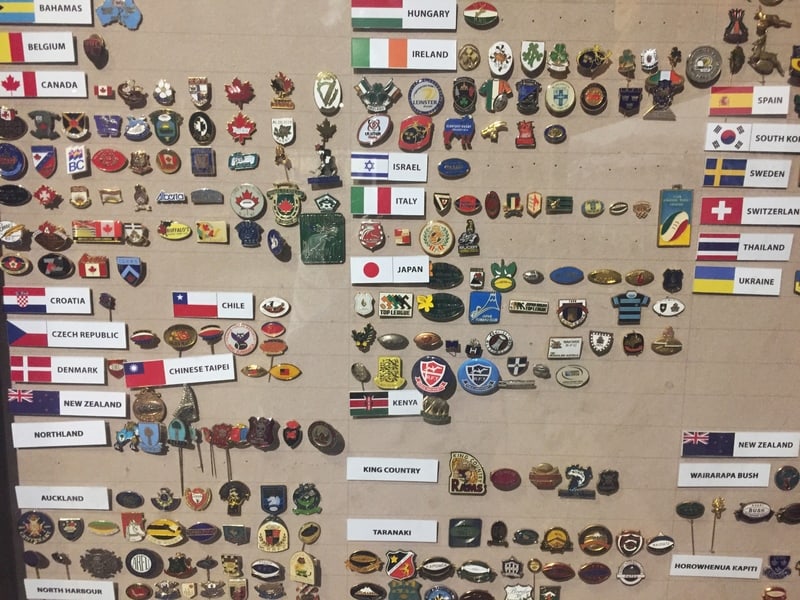
So many pins!
I spent around 75-minutes taking everything in. I read nearly all the information boards and took a token tourist photo as you saw earlier. I walked around the interactive area but didn’t play, nor did I talk to the volunteer. So overall, I’d expect most people to be finished visiting the museum in 60-90 minutes.
At $12.50 for adults, it’s a reasonable price for a museum designed to celebrate the countries national sport. If you’re planning to spend some time in Palmy, definitely give the rugby museum a look.
3. FIVE THINGS I LEARNED AT THE MUSEUM

You won’t be learning about rugby skills in the museum…you’re on your own with that.
1. The use of colourful rugby jerseys and emblems can be traced back to the games roots in the 1830s. At this time it was common practice in England private schools and Rugby clubs in NZ quickly adopted this culture into the game.
2. The man credited with introducing whistles for referees is William Atak. As a ref, he got tired of shouting at players appealing decisions. This was back in 1883, and he first used a dog whistle before they were phased out for the whistles used today.
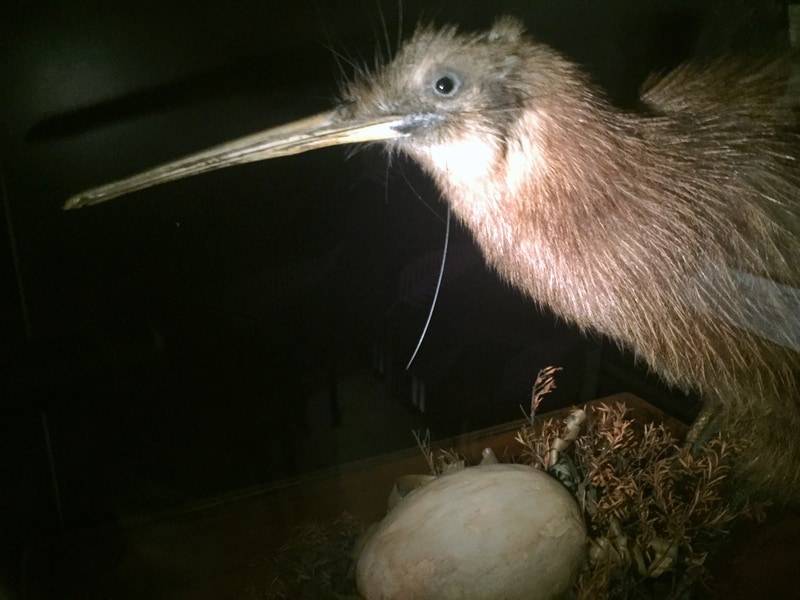
The gift that was never gifted (read below for why).
3. The stuffed kiwi you see above is from the All Blacks team dubbed the ‘Invincibles’ who travelled to play in Great Britain and France in 1924-25. Designed to fit in a unique wooden travelling case, the idea was to give the kiwi to the first team who beat them, as a gift. But, the team never lost a game and the kiwi returned back to NZ with the team.
4. The first time the All Blacks played an international test against Australia was in 1903 at the SCG. The All Blacks won the match 22-3, scoring three tries to one (the points system has evolved).
5. The last time the All Blacks travelled to an overseas destination by sea was in 1949 when they went to South Africa. This was also the most unsuccessful tour from an All Blacks team who lost seven of their 25 games (plus four draws).
If you’ve got any questions, feel free to email me at jub@churnewzealand.com or leave a comment below. Been to the museum? Let others know about your visit in the comments 🙂
What to read next:
- A massive list of things to do in New Zealand
- A tour of Eden Park
- The best souvenirs to buy in New Zealand
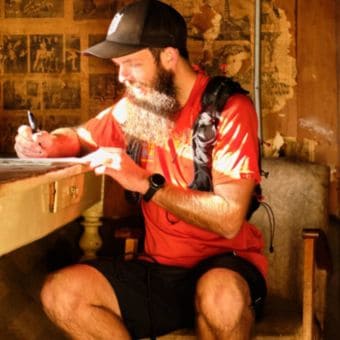
Hey, it’s Jub here. I’m the guy behind Chur New Zealand, helping you have the best time hiking, trekking, walking…whatever you want to call it…in NZ. I’m based in Queenstown and am always out and about exploring trails, old & new. If you have any questions, reach out.
